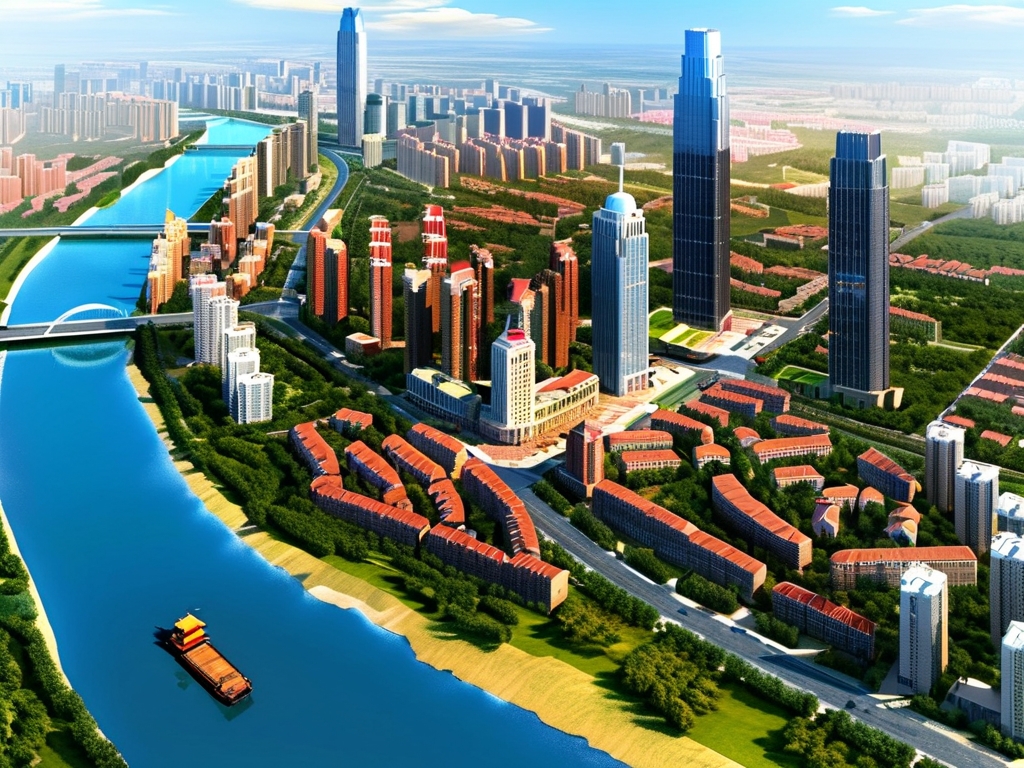In the era of smart cities and data-driven innovation, the role of data engineers has become pivotal in shaping urban landscapes. Among these professionals, Hadmap data engineers are emerging as key players in Tianjin’s ambitious "New Mapping" initiative. This article explores how their expertise is transforming Tianjin into a hub of geospatial intelligence and sustainable development.

The Evolution of Hadmap Data Engineering
Hadmap, a specialized field within geospatial data science, focuses on high-definition mapping (HD mapping) and real-time data integration. Unlike traditional cartography, Hadmap engineering involves processing terabytes of sensor data from LiDAR, drones, and IoT devices to create dynamic, layered maps. These maps power autonomous vehicles, urban planning systems, and emergency response networks. In Tianjin, a city with a rich industrial heritage and rapid urbanization, Hadmap engineers are addressing unique challenges such as coastal terrain modeling, traffic optimization in dense metropolitan areas, and environmental monitoring across the Bohai Bay region.
Tianjin’s "New Mapping" Vision
Tianjin’s "New Mapping" project, launched in 2023, aims to establish the city as a global leader in smart infrastructure. At its core is a collaboration between municipal authorities, tech giants like Alibaba Cloud, and local Hadmap data engineering teams. The initiative focuses on three pillars:
- Precision Urban Planning: Using HD maps to simulate flood risks in low-lying districts like Binhai New Area.
- Intelligent Transportation: Developing real-time traffic flow models for the Jingjinji Metropolitan Region.
- Eco-Monitoring: Tracking air quality and wetland preservation efforts using satellite-data fusion techniques.
A notable achievement under this project is the Tianjin Digital Twin Platform, a 3D virtual replica of the city updated with live data streams. Hadmap engineers designed algorithms to integrate construction permits, weather patterns, and public transit schedules into this platform, enabling policymakers to visualize the impact of decisions before implementation.
Technical Challenges and Innovations
Tianjin’s coastal geography and rapid industrial growth pose unique hurdles. Saltwater corrosion affects ground sensors, while frequent land reclamation projects demand constant map updates. Hadmap teams have responded with innovations such as:
- AI-Powered Data Cleaning: Machine learning models that filter noise from LiDAR scans in high-humidity environments.
- Blockchain-Backed Data Integrity: A decentralized system to verify map updates across stakeholders, reducing errors in zoning records.
- Edge Computing for Real-Time Updates: Deploying localized servers at subway hubs to process traffic data without latency.
One groundbreaking case involved rerouting 30% of container truck traffic from the Tianjin Port by analyzing historical congestion patterns and weather data. This reduced diesel emissions by 18% annually—a win for both logistics efficiency and environmental goals.
The Human Factor: Skills Shaping Tianjin’s Future
The demand for Hadmap data engineers in Tianjin has surged, with universities like Tianjin University launching specialized master’s programs. Professionals in this field require hybrid skills:
- Proficiency in Python and SQL for big data processing.
- Domain knowledge in civil engineering or hydrology.
- Familiarity with regulations like China’s Geospatial Data Security Law.
Interviews with local engineers reveal a strong sense of mission. "We’re not just drawing maps," said Liu Wei, a team lead at Tianjin Mapping Institute. "We’re building the nervous system for a city that must balance growth with resilience."
Economic and Social Impact
The "New Mapping" ecosystem has attracted over ¥2 billion in investments, spawning startups focused on drone-based pipeline inspections and AR navigation apps for tourists. On the social front, HD maps have improved disaster preparedness—a 2023 simulation using Hadmap data helped evacuate 12,000 residents during a typhoon drill in Tanggu District.
Critics argue about data privacy risks, especially with facial recognition integrated into public space maps. However, Tianjin’s strict adherence to China’s data sovereignty laws has so far prevented major breaches.
Looking Ahead: Tianjin as a Global Blueprint
By 2030, Tianjin aims to export its Hadmap frameworks to other Belt and Road Initiative partners. Collaborations with Singapore’s Smart Nation initiative are already underway, testing cross-border data compatibility for maritime logistics.
In , the synergy between Hadmap data engineers and Tianjin’s visionary policies is redefining urban intelligence. As cities worldwide grapple with climate change and population density, Tianjin’s "New Mapping" journey offers a compelling model—one where bytes and blueprints combine to build safer, smarter communities.

